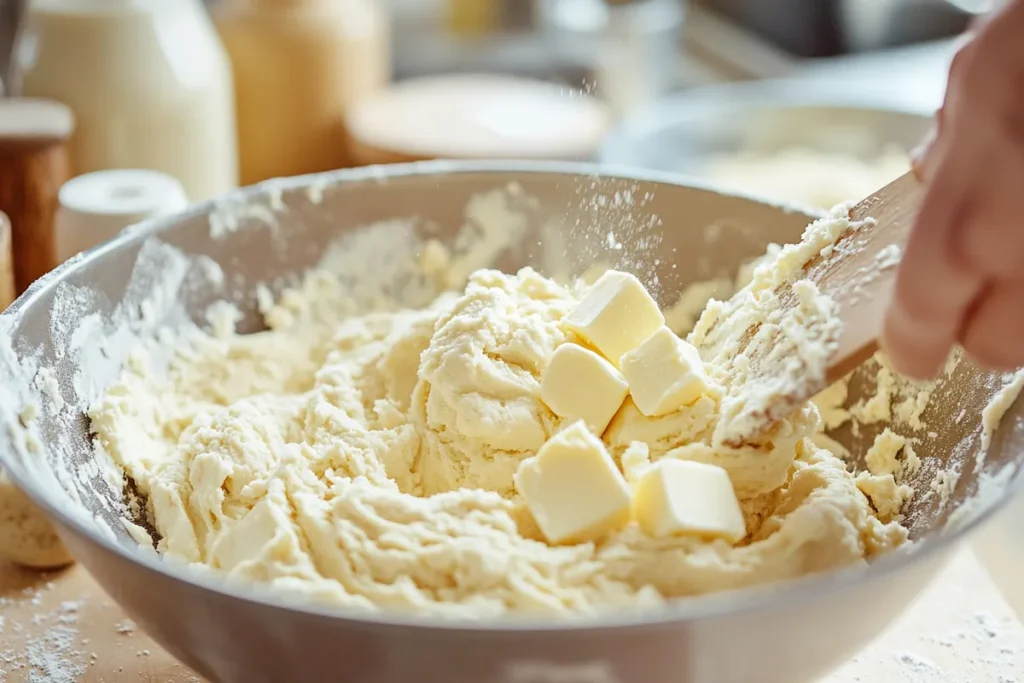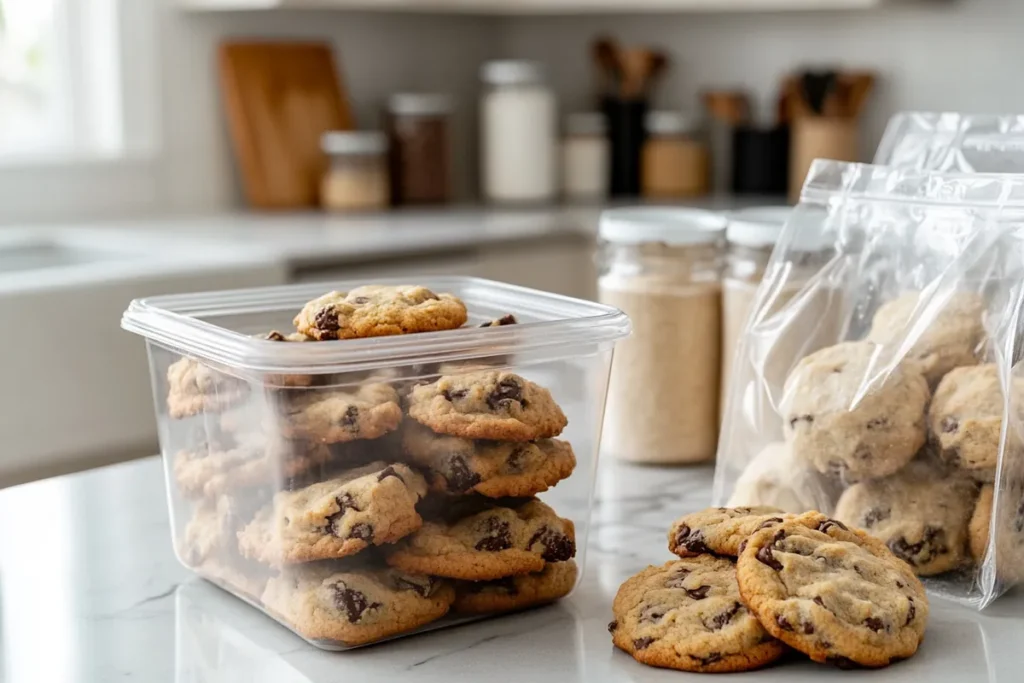Creating irresistibly soft and moist cookies can be a challenge for many bakers. Whether you’re baking for yourself or preparing treats for others, no one enjoys dry or crumbly cookies. The good news is, by understanding the science behind the ingredients and using the right techniques, you can achieve perfectly moist and tender cookies every time.
How Butter and Fats Influence Moist Cookies

Butter is a key ingredient in almost all cookie recipes. The fat in butter plays a significant role in determining the final texture of your cookies. As butter melts during the baking process, it adds moisture to the dough, which gives cookies their soft and rich texture. However, not all fats are created equal, and each type brings its own benefits to cookie dough.
- Butter: Known for adding a rich flavor, butter is the preferred fat for soft cookies. Use unsalted butter to control the amount of salt in your recipe. For even moister cookies, consider using melted butter instead of cold butter. Melted butter blends more thoroughly with the other ingredients, creating a denser, chewier texture.
- Vegetable oil: Oil can be used as a substitute for butter in some recipes to make cookies even softer. Since oil doesn’t solidify at room temperature like butter, cookies made with oil tend to stay soft for longer periods. However, oil lacks the flavor profile that butter brings, so you may need to adjust by adding more flavoring, such as vanilla extract.
- Shortening: Shortening can also be used as a fat source. It has a higher melting point than butter, helping cookies hold their shape during baking, while still providing a soft center.
For other baked goods that require a balance between moisture and flavor, like brownies, using the right fat is essential. Check out this guide on what makes brownies cakey or fudgy to see how fat choices affect texture.
Why Brown Sugar and Molasses Make Cookies Moist
When it comes to sugars, brown sugar is essential for making moist cookies. Brown sugar contains molasses, a liquid byproduct that helps retain moisture and adds a rich, caramel-like flavor to cookies. This makes it a better option than white sugar for achieving a softer texture. You can even experiment with using a higher ratio of brown sugar to white sugar to further enhance moisture retention in your cookies.
Incorporating molasses directly into cookie dough is another way to ensure moisture. It adds a depth of flavor while keeping the cookies from becoming dry. Molasses works well in recipes where you want a slightly richer flavor, such as gingerbread cookies or spice cookies.
For cookies that require a moist, chewy center, liquid sweeteners like honey or maple syrup can also be added to increase moisture content. These sweeteners help cookies stay soft for days and also enhance the flavor profile.
How Eggs Help Make Cookies More Moist
Eggs are critical to making cookies moist, as they provide both structure and moisture. Egg yolks, in particular, contain fats and lecithin that add richness and softness to cookie dough. If you’re looking for even softer cookies, you can try using extra egg yolks in your recipe.
For example, replacing one whole egg with two egg yolks can increase the moisture without making the cookies too dense. This small change can make a big difference, especially in recipes for chocolate chip or sugar cookies.
Additionally, room temperature eggs mix more thoroughly with other ingredients, resulting in a better texture and more even distribution of moisture throughout the dough. Eggs are versatile ingredients, and adjusting their quantity or preparation can help achieve the perfect cookie consistency.
Flour: Choosing the Right Type for Moisture Retention
Flour is another key factor in determining the texture of cookies. The type of flour you use can have a big impact on how much moisture the dough retains.
- All-purpose flour: This is the most common type of flour used in cookie recipes. It provides a good balance of structure and softness.
- Cake flour: For cookies that are exceptionally soft and tender, you can try using cake flour instead of all-purpose flour. Cake flour has a lower protein content, which means it forms less gluten, resulting in a softer texture.
It’s also important to measure flour correctly to avoid overloading the dough with dry ingredients. Adding too much flour can absorb moisture, leading to dry and crumbly cookies. Make sure to spoon your flour into the measuring cup and level it off rather than packing it down.
The Science of Chilling Cookie Dough
Chilling your cookie dough before baking is one of the best-kept secrets for creating moist cookies. Chilling allows the fats in the dough to solidify, which slows down the spreading of the cookies while they bake. This results in cookies that are thicker, chewier, and retain more moisture.
Chilling the dough also allows the flavors to meld together, giving your cookies a more developed taste. For best results, chill the dough for at least 30 minutes, but if you have time, letting it rest for several hours or overnight will yield even better results.
Baking Techniques for Moist Cookies
Underbaking Your Cookies
One of the simplest ways to ensure your cookies stay moist is to slightly underbake them. Remove your cookies from the oven while the centers are still soft and gooey. The residual heat will finish the baking process, but the centers will remain soft and chewy. By underbaking by just a minute or two, you can prevent the cookies from drying out as they cool.
Using Lower Oven Temperatures
Baking your cookies at a slightly lower temperature, such as 325°F instead of 350°F, can also help retain moisture. A lower temperature gives the cookies more time to spread out and bake evenly without losing too much moisture. The result is a soft, chewy center with a perfectly crisp edge.
Storing Cookies to Keep Them Moist

After baking, proper storage is essential to keep your cookies soft and moist for as long as possible. To prevent cookies from drying out, place them in an airtight container once they’ve cooled. If you’re storing the cookies for a longer period, adding a slice of bread or a damp paper towel to the container will help maintain humidity, keeping your cookies soft.
You can also freeze the cookie dough instead of baking all the cookies at once. This way, you can bake fresh cookies whenever you want, ensuring that they’re always moist and delicious. Simply roll the dough into balls, place them on a baking sheet, and freeze. Once frozen, transfer the dough balls to a resealable bag and store them in the freezer. When you’re ready to bake, you can pop them straight into the oven.
Preventing Common Cookie Mistakes
Achieving moist cookies isn’t difficult, but there are a few common mistakes that can cause your cookies to turn out dry and crumbly. Here’s what to avoid:
- Overbaking: Even a minute or two too long in the oven can dry out your cookies.
- Using too much flour: Over-measuring flour can lead to cookies absorbing too much moisture, making them dry.
- Skipping the chilling process: This often results in cookies that spread too much, becoming thin and crispy instead of soft and chewy.
FAQs
What Makes Cookies Moist and Chewy?
The combination of butter, brown sugar, egg yolks, and the right baking techniques, such as underbaking and chilling the dough, ensures that cookies turn out moist and chewy. Incorporating liquid sweeteners like honey or maple syrup can also help.
How Do I Keep Cookies Moist After Baking?
To keep cookies moist after baking, store them in an airtight container with a slice of bread or a damp paper towel. This helps maintain the humidity inside the container, keeping the cookies soft and fresh for longer. You can find more ways to keep cookies soft and chewy at The Spruce Eats.
Does Chilling Cookie Dough Make Cookies Softer?
Yes, chilling the dough helps the fats solidify, resulting in cookies that spread less and stay soft and chewy after baking.
Why Are My Cookies Dry and Crumbly?
Dry cookies are often caused by adding too much flour or overbaking. To avoid this, carefully measure your ingredients and remove the cookies from the oven while they’re still slightly underbaked.
Can You Use Oil Instead of Butter for Soft Cookies?
Yes, oil can be substituted for butter to make cookies softer. However, this can slightly alter the flavor, so you may want to adjust with extra flavorings like vanilla extract.
Conclusion
Achieving moist cookies is all about using the right combination of ingredients, techniques, and baking methods. By incorporating butter, brown sugar, egg yolks, and mastering key techniques like underbaking and chilling the dough, you can consistently create cookies that are irresistibly soft and chewy. Paying attention to oven temperature, ingredient ratios, and mixing methods ensures the perfect texture every time. Proper storage, such as using airtight containers and adding a slice of bread, also plays a critical role in maintaining moisture over time, ensuring that your cookies stay fresh and soft for longer. Now that you have all the tools and tips, go ahead and bake your perfect batch of moist, delicious cookies today!
